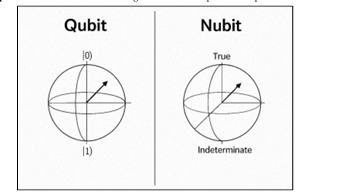Neutrosophic Quantum Theory: Partial Entanglement, Partial Effect of the Observer, and Teleportation
Keywords:
Neutrosophic Logic; Quantum Theory; Quantum Mechanics; Partial Entanglement; Observer Effect; Quantum Measurement; Indeterminacy; Quantum Uncertainty; Decoherence; Superposition; Quantum Computing; Neutrosophic Quantum Computing.Abstract
Quantum mechanics presents phenomena, such as entanglement and the observer effect,
that challenge classical logical frameworks. Traditional binary and even fuzzy logic often prove
insufficient in capturing the inherent imprecision, incompleteness, and indeterminacy prevalent in
quantum systems. This article proposes a novel application of Neutrosophic Logic to describe
partial entanglement and the partial effect of the observer in quantum physics experiments. By
utilizing three independent components—Truth (T), Indeterminacy (I), and Falsity (F)—
Neutrosophic Logic provides a comprehensive framework to represent quantum states that are
neither fully correlated nor completely uncorrelated, but partially entangled. The degree of
entanglement is modelled as T, separability as F, and intrinsic quantum uncertainty or decoherence
as I. Furthermore, Neutrosophic Logic naturally accommodates observer-dependent truth values,
aligning with the contextual nature of quantum measurements. This approach allows for a nuanced
description where a quantum state can be simultaneously partially true, partially false, and partially
indeterminate depending on the measurement basis or the act of observation. We argue that
Neutrosophy offers a powerful philosophical and mathematical lens to better articulate the non
binary, fluid, and context-sensitive aspects of quantum reality, particularly where classical logic
falters in capturing the essential "blurred areas" of quantum phenomena.
Downloads

Downloads
Published
Issue
Section
License
Copyright (c) 2025 Neutrosophic Sets and Systems

This work is licensed under a Creative Commons Attribution 4.0 International License.






